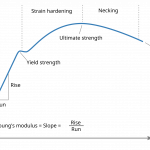
Key Takeaways
- Measuring relative porosity can be done accurately without relying solely on costly tomography methods.
- Resonance frequency testing offers a reliable, non-destructive way to assess porosity levels.
- Consistency in raw materials, dimensions, and weight is critical for obtaining accurate porosity measurements.
- Using advanced testing solutions can improve product quality control and reduce unnecessary production costs.
Understanding Porosity and Why It Matters
Porosity plays a significant role in determining the physical performance and durability of materials and finished products. Whether you work with ceramics, metals, composites, or industrial components, achieving the right porosity balance impacts everything from structural strength to thermal stability. Too much porosity can weaken materials, while too little can hinder functions like permeability or insulation.
For manufacturers and researchers alike, accurate porosity measurement isn’t just a quality control step, it’s a safeguard against product failure, warranty claims, and reputational damage.
The Problem with Traditional Porosity Measurement Methods
One of the most well-known procedures for assessing porosity is industrial tomography. While effective, tomography is expensive, time-consuming, and often impractical for high-volume production lines. It usually requires specialized equipment, skilled operators, and in some cases, destructive procedures to get detailed internal imaging.
For many businesses, the challenge is to find a method that offers the same accuracy without the prohibitive costs or delays associated with tomography.
Resonance Frequency as a Powerful Alternative
If your raw material, finished dimensions, and weight remain consistent across production batches, resonance frequency testing emerges as a compelling solution. This approach measures the natural vibration frequencies of a component when it’s gently struck or excited. Differences in resonance frequency strongly correlate to changes in internal structure—including porosity variations.
By using advanced tools like the Grindosonic MK7, manufacturers can quickly and non-destructively assess the relative porosity of their products. The process offers precision, repeatability, and the scalability needed for manufacturing environments.
How It Works in Practical Terms
- Standardization: Ensure the product weight, dimensions, and raw materials are consistent for every batch.
- Impulse Excitation: Introduce a controlled stimulus—often a tap or pulse—to the sample.
- Frequency Measurement: Sensors capture and record the resonance frequency.
- Data Correlation: Comparing frequencies between samples indicates relative changes in porosity.
Advantages Over Tomography
- Non-destructive testing that preserves the integrity of the product
- Rapid assessments, ideal for inline or near-line quality control
- Lower operating costs and minimal technical training requirements
- High correlation accuracy when production consistency is maintained
What Industries Benefit Most
Resonance frequency-based porosity measurement has wide applications across industries, including:
- Ceramics: Precise control over porosity ensures strength and temperature resistance.
- Metallurgy: Detecting microstructural variations improves reliability in high-stress applications.
- Additive Manufacturing: Ensures 3D-printed parts meet mechanical specifications without hidden defects.
- Industrial Components: Maintains tolerances for performance-critical parts, reducing failures in service.
For more details on specific sector applications, explore our applications page.
Best Practices for Accurate Relative Porosity Measurement
While the method is straightforward, following best practices ensures accuracy and repeatability:
| Best Practice | Benefit |
|---|---|
| Consistent Sample Prep | Eliminates variables unrelated to porosity |
| Environmental Control | Prevents temperature or humidity from affecting results |
| Regular Sensor Calibration | Ensures reliable data collection over time |
| Batch-to-Batch Comparison | Quickly identifies deviations before they become costly |
Integrating this Method into Your Quality Process
Transitioning to resonance frequency testing for porosity measurement doesn’t require overhauling your process. Many modern systems are compact and compatible with existing quality control workflows. By investing in the right equipment and training, you can boost efficiency while maintaining precision.
Moreover, because it’s faster than tomography, it enables real-time decision-making, reducing waste and improving production turnaround.
FAQ
What is the most accurate way to measure relative porosity?
When production conditions remain consistent, resonance frequency testing offers an accurate, non-destructive, and cost-effective way to measure relative porosity without resorting to expensive tomography.
Why is relative porosity measurement important?
It helps manufacturers maintain product quality, ensure performance standards, and reduce potential failures in the field. Monitoring porosity is key to avoiding defects and meeting customer specifications.
Can resonance frequency detect small changes in porosity?
Yes. Even minor variations in material structure can shift the resonance frequency, making the method highly sensitive to porosity changes when proper controls are in place.
Is resonance frequency testing suitable for all materials?
It’s applicable to a wide range of materials including ceramics, metals, composites, and certain polymers, provided the samples are consistent in weight, size, and composition.
How does this method compare to tomography?
Tomography delivers detailed internal imaging but is more costly and time-intensive. Resonance frequency testing offers a faster, less expensive solution with strong correlation to porosity levels when applied correctly.
Accurate porosity measurement doesn’t have to be difficult or expensive. If you’re ready to improve your quality control process and explore advanced, cost-effective testing solutions, get in touch with our team today and learn how we can help you implement this technology in your operations.



